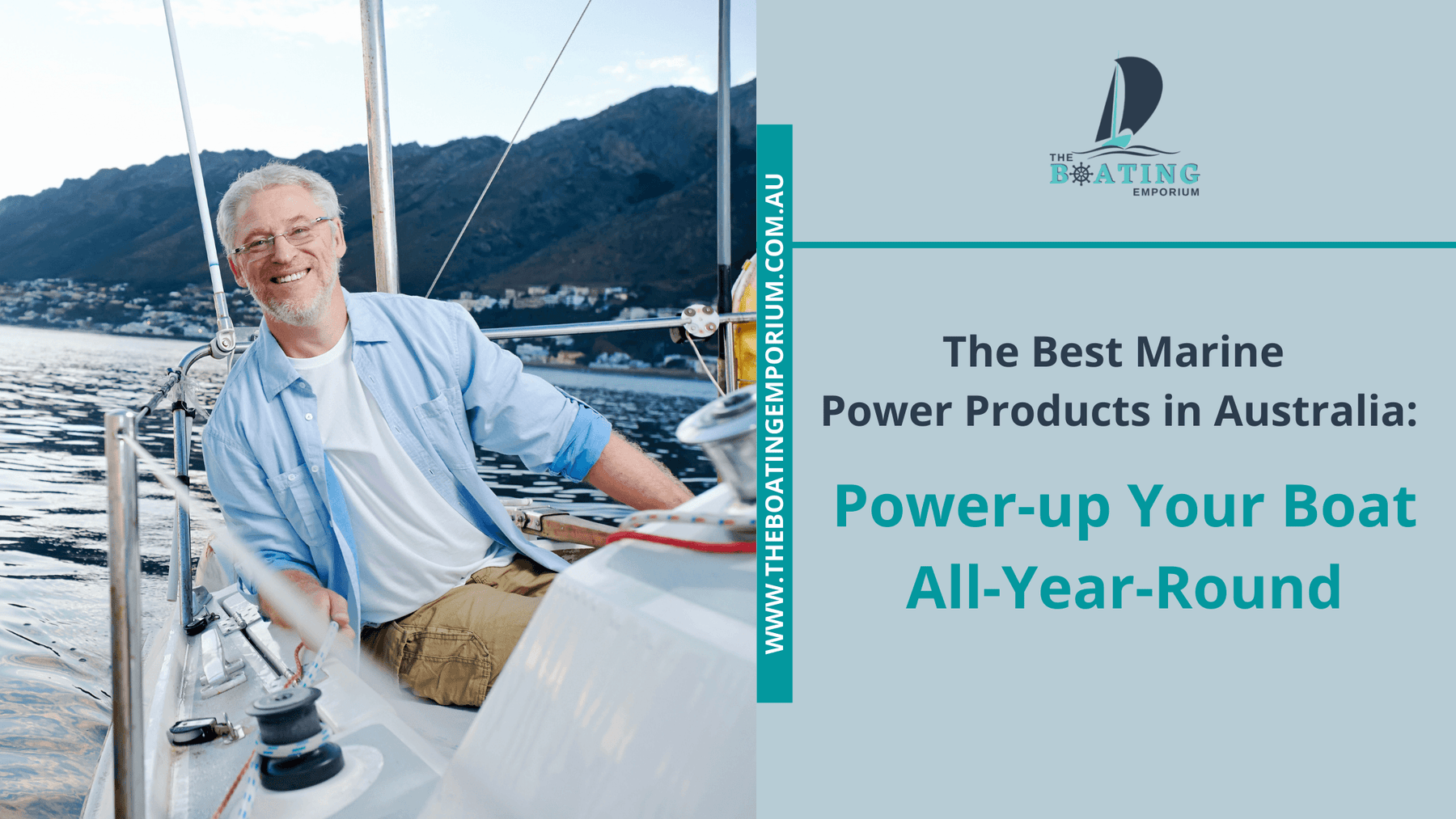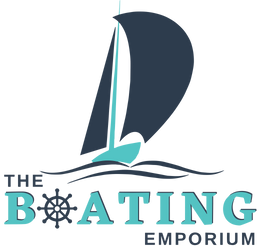PLEASE EMAIL OR BEGIN A LIVE CHAT

The Best Marine Power Products in Australia: Power Up Your Boat All-Year-Round
Imagine being on your boat, in the middle of the vast sea, during your most favorite time of the year. Sounds promising, doesn’t it? According to travelnation.co.uk, 90% percent of Australians live on the coast. With this kind of environment—being surrounded by the sea and rivers, residents have taken a great liking to water-related activities like boating.

Although some believe that boating season is Australia comes to a halt after Easter, there are those who still believe that boating is an all-year-round activity one can enjoy. With that in mind, it is only important to have the best marine power products that will keep your boat running in the best condition throughout the year.
No matter where you choose to sail your boat, it is essential to have quality boat power products installed to make sure that you have nothing but the best boating experience. In this article, we will show you the different types of Marine Power Products, and the best ones in Australia that will keep your boat running all year!
What are The Different Marine Power Products?
Marine power products, also called boating power accessories are essential in enjoying your time in your boat. For instance, a marine starter battery is used to start your boat’s engine. Without this, and with your boat’s power off, you wouldn’t be able to sail anywhere, would you?
Another example of the importance of a marine power product for your boat are inverters. With the use of inverters, you can use “household items” like marine ranges or freezers without your boat being hooked up to shore power, or having to go through the hassle of setting up a generator.
In this section, we will take a closer look into the different boat power accessories, and just how they will make your life in the boat easier and more enjoyable!
Deep Cycle Batteries
A deep cycle battery is designed to charge slowly for a longer period of time. It can survive several hundred charging and discharging cycles. Once a boat has started its engine, it will no longer require the same amount and surge of energy from the starting battery. It will then need a continuous and reliable power source to amp up a boat’s electric trolling motor, GPS devices, audio systems, anchor winches, and other appliances. That’s when a deep cycle battery comes in handy.

Also known as the “trolling battery”, a deep cycle battery has three types: the flooded cell, gel cell, and AMG or absorbed glass mat. A flooded cell requires monthly inspection to monitor the cells’ fluid levels, and one might need to add distilled water to maintain it. This type of deep cycle battery needs to be charged at least once a month, and should be recharged right after use.
On the other hand, gel cells and AMGs have no cell cap, and do not require monthly monitoring. These two types of deep cycle batteries lose charge slower compared to a flooded cell, and doesn’t require immediate recharging. A setback though, gel cells and AMGs are more expensive and cannot last as long as high-grade flood cells.
There are a few things one should consider before buying a deep cycle battery for their boats. Firstly, you must choose a battery that will fit your boat’s battery box. You should also make sure of how long you’d like to use the battery for. High-cycle batteries are relatively more expensive, but it might be would be worth it as cost per cycle goes down as battery life goes up. So, when looking for a deep cycle battery, it’s good to find a dealer that offers a good deal between price and cost cycle.
Compact Marine Inverters
A marine compact inverter is essential in your life in the boat. With the use of an inverter, (a sine wave inverter, to be more specific) you can convert direct current (DC) electricity from a battery to alternating current (AC) electricity, which is used to make appliances to run.
When you’re on the water, you would need a marine inverter to draw electricity from your deep cycle battery. Without it, you won’t have any of your essential appliances running off-shore. There are marine inverters like the Victron Phoenix Compact Inverter that are pure sine wave inverters. This means that they are perfect converters when you use appliances like refrigerators, microwaves, audio and video equipment and more. These are equipment that cannot run with direct electricity from batteries.

There are two types of marine inverters—the normal inverter and inverter charger. A normal inverter simply draws energy from the deep cycle battery and convert it into AC. This is its only function, and cannot charge any battery.
An inverter charger, on the other hand, does what a normal inverter does, and has a built-in charger for batteries. This allows you to charge your deep cycle batteries whenever you’re on shore. Most boaters prefer this type of marine inverter as it’s more functional and automated.
500W inverters are commonly used in boats, however, most boaters opt for inverters with higher wattage. Before purchasing a compact marine inverter, you must first make sure what kind of electronics you’re using. This is because appliances would require an additional 20% from an inverter’s wattage to run. For example, a 1000W appliance would not run on a 1000W inverter. You would need to add an allowance of 20% for it to operate, so a 1200W inverter would be the best in this case.
Marine Lithium Batteries
Lithium batteries are reliable batteries that can be made as alternative to the usual lead-acid. Boating requires a serious amount of energy, so you would need to find a power source that’s reliable and can meet your equipment’s crucial requirements.
Deep cycle batteries can also come in the form of lithium batteries. This type of battery is more lightweight, charges faster, temperature tolerant, and can last up to 10 times more than a lead-acid battery. Its charge-discharge cycle is usually between 3000 to 5000 cycles. This is far from a lead-acid battery which usually only has up to 1000 charge-discharge cycles.

Moreover, a lithium battery is almost maintenance-free. This ensures that it can give optimum results with little to no effort on maintenance at all.
Although lithium-ion batteries might be significantly more expensive than lead-acid batteries, you are sure that you are getting what you are paying for. With paying more than the usual, you get to enjoy the benefits of having a lightweight, safer, longer-lasting, and more efficient marine battery for your boat.
Battery Chargers
Although marine batteries do not require a special kind of charger, boaters must still be careful in choosing their battery charger. First of all, you must make sure that your charger matches your marine battery’s voltage and chemistry. However, there are marine battery chargers that are water resistant. This kind of charger is usually permanently mounted on the boat so you can charge your batteries at any time.
Knowing your marine battery’s voltage is essential when looking for a battery charger. Most boats would have a 12V battery, but some use 26-36V. If you want to make sure what charger is most compatible for your batteries’ voltage, you can always consult your user’s manual.

Another thing to look out for when choosing a battery charger is the battery’s chemistry. Batteries come in four types—gel, flooded, AGM, and lithium. If you use a charger that’s not compatible with your battery, this will cause damage and deplete its life cycle.
There are battery chargers in the market, like the Blue Smart IP65 Charger, that are compatible with all four types. There are also solar chargers like the Victron Smart Solar Charge Controller that charges your batteries by gathering energy through solar panels.
Marine Wind Chargers
Wind chargers harness wind to generate electricity and charge your marine batteries. Also known as wind turbines or wind generators, they are getting more and more popular among boaters these days. With the use of wind as power source, it means that you would rely less on shore power, and can keep your engine running and essentials charging even while sailing. These chargers require a controller/regulator to regulate the power output to the level needed.
Just like purchasing a normal battery charger, are some things a boater should consider getting their own marine wind charger. In an article by Life of Sailing, they explained a few technical terms usually encountered when using a marine charger, such as low cut-in speed, auto brake, and more. Knowing these general terms would be favorable if you want to make the most out of using your wind charger.

Another thing that you should consider would be the compatibility of your wind charger to your batteries. Having a wind charger that can charge all types of batteries can save you money in the future, even when you decide to upgrade from a simple lead-acid battery to a lithium-ion one.
One example of this wind charger is the Rutland 1200i Wind Charger. This 24V marine wind generator comes with a regulator and can start charging at lower wind speeds regulating 1.6amps in 10 knots (kts) of wind.
Power Stations
Although they might only be as small as a microwave oven, a marine power station can provide stable power without the help of noisy, gas-powered generators. Its AC output feature also makes it more accessible and portable since you wouldn’t have to hook your appliances on inverters to make them run.
One example of this is the Ecoflow River 2 Portable Power Station. This power station has an AC output of up to 300W. The RIVER has pure sine wave AC outlets and can power devices with a wattage of up to 600W when you set it on X-Boost mode. To know more about this power station, click here.

Portable power stations can be a bit more hazardous to use, so a boater must follow some safety protocols when using them on-board. A marine power station should not be placed under a deck or in a cabin because it requires a lot of ventilation.
There are also solar power stations available in the market, like the Bluetti EB70 Power Station that comes with solar panels.
All in all, a portable power station allows you to enjoy your boating journey with less hassle, keeping it fun no matter where you sail.
These are the different kinds of marine power products that will surely keep your boat running all-year round! For the best results, you should always make sure that you know your boat’s needs, and your preferences as boater.
It’s also good to remember that marine power products may differ in prices and outputs, so finding the best distributor that can offer you good deals for your money is a must!
Buy Marine Power Products from The Boating Emporium
Here at The Boating Emporium, we are committed to help you find the best products that will give you the best experience as you journey the water. This is why we have partnered with brands like Victron, Rutland, Baintech and more. By distributing their quality products, we make the best marine power products accessible to every Australian.

We don’t just distribute the best marine power products in the country, we also house different boating and watersports equipment for all ages. From kneeboards for kid beginners, to stand-up paddle boards for adult enthusiasts—name it, we have it!
Ready to start your journey? Contact us at 1300-987-441, or visit our website at www.theboatingemporium.com.au! Our friendly staff are ready to accommodate your questions, and help you pick out the not only the best marine power products, but anything you might need to enjoy the blue waters!
For more information, you can also visit our social media pages here: Facebook, Instagram.
